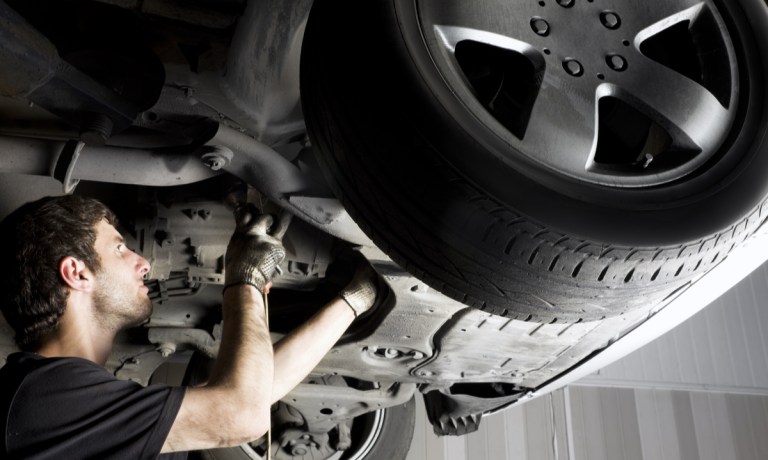BNPL Creates Dealership Revenues as Drivers Dodge Repair Sticker Shock

For Bumper CEO James Jackson, a career at tech firms over the course of more than a decade has served up “lots of valuable lessons on how you scale FinTechs and how you raise capital,” as he noted to Karen Webster.
But his time at PayLater, part of the Wonga Group, helped shape insights into the appeal of buy now, pay later, with one of the earliest offerings in Europe.
“I got excited by the potential,” he said. Paying over time has had, and still has, the power to be a game changer across a variety of sectors, making even unplanned, weighty expenses more affordable.
That includes automotive repair, a roughly $300 billion market where sticker shock at the dealers’ repair shops steers drivers to push off repairs to another day, another week, another month.
Or maybe never.
Picture this, then: The red light flashes on the dashboard, the warning lights move from amber to red. The danger on the road mounts the longer a driver puts off the work that’s needed.
And the dealer, well, they lose out on revenues.
Unsafe at Any Speed?
Happens more than you might think, said Jackson, since people — even relatively affluent drivers — don’t really expect their engines to conk out.
When the emergencies happen, they’re left examining how much breathing room’s left on the credit cards or hitting up relatives for some ready cash to help cover the repair expenses.
If the work gets done at all.
“Red alerts are ‘safety critical,’” said Jackson, who added, “You need to get these repairs done.” But even for this most urgent work, he said, dealers — even at upscale brands like Audi and Porsche — are only selling/capturing roughly half to 60% of that work.
Even luxury car brands, he said, are losing billions of pounds in work that might otherwise be performed each year. The Porsche owner with a significant amount of paper wealth (in the market, perhaps) still has to contend with the mortgage, with the kids’ school tuition, with all manner of other expenses … and the tradeoffs must be weighed.
As a result, he said, 1 in 5 U.K. drivers admit to driving unsafe vehicles because they cannot afford the repair bill — the exhaust system’s on the way out, or the tires are bald.
Bumper operates as a BNPL platform offering flexible payments for car repairs. In terms of the mechanics of the platform (pun intended, in this case), users enter car and location details in a two-click process to find repair partners, and apply for credit limits up to £5,000. Underwriting is determined by vehicle-level data (age and the extent of the repair work).
Approval happens online, a unique code is generated, an appointment booked at the service location (there are 5,000 partners, responsible for 95% of the platform’s volume ). Payments are spread out over as many as six installments, and are interest free. Bumper, he said, takes a commission from each repair bill of mid-single to high-single digit percentage points.
“It’s a completely digital process,” Jackson said of the platform interactions, “and you do not need to talk to anyone.”
Pushing an Open Door
There’s prologue here, given the fact that most drivers don’t pay for their cars upfront — rather, they spread the financing of the vehicles over several years. Paying for auto repairs over time, he told Webster, instantly finds wide berth with consumers.
“We’re pushing against an open door,” he said. The positive ripple effect extends to the dealers, too, as they convert as much as 70% of the work that otherwise would not get done without the financing in place.
The average invoice value tops £800, and the original equipment manufacturers (OEMs) see a positive impact because their vehicle brands are kept intact, as dealerships and repair work are kept affordable.
The appeal of BNPL for car repair shows up in the data: Bumper has estimated that it has processed half a million repairs across Europe and that its general merchandise value (GMV) has surged 100% annually in recent years. The company’s scaled from small dealer groups to OEMs in that time frame, with Nissan, Ford, Volvo and others in the mix.
Bumper’s BNPL model recently got a $48 million vote of confidence as earlier this month the company said it had raised that amount in Series B financing from the likes of Autotech Ventures, with investment from Shell Ventures, JLR’s InMotion Ventures, Porsche Ventures and Revo Capital.
The money, Jackson said, has been earmarked to launch a new website and broaden its reach across Europe (where the firm already has presence in the U.K., Spain, Germany and the Netherlands).
The data that’s tied to the existing integrations with OEMs and dealers, he said, can eventually be monetized in other ways — since, in Jackson’s estimation, Bumper’s the only business that has touch points with scores of back-end systems, the OEMs and with thousands of dealers.
“There’s no coincidence that many of our investors are in the auto industry,” he said, “and they can get value in that data as well.”
And for the drivers, he said, with BNPL as a payment option, when the red warning lights flash, “It’s there when you need it.”